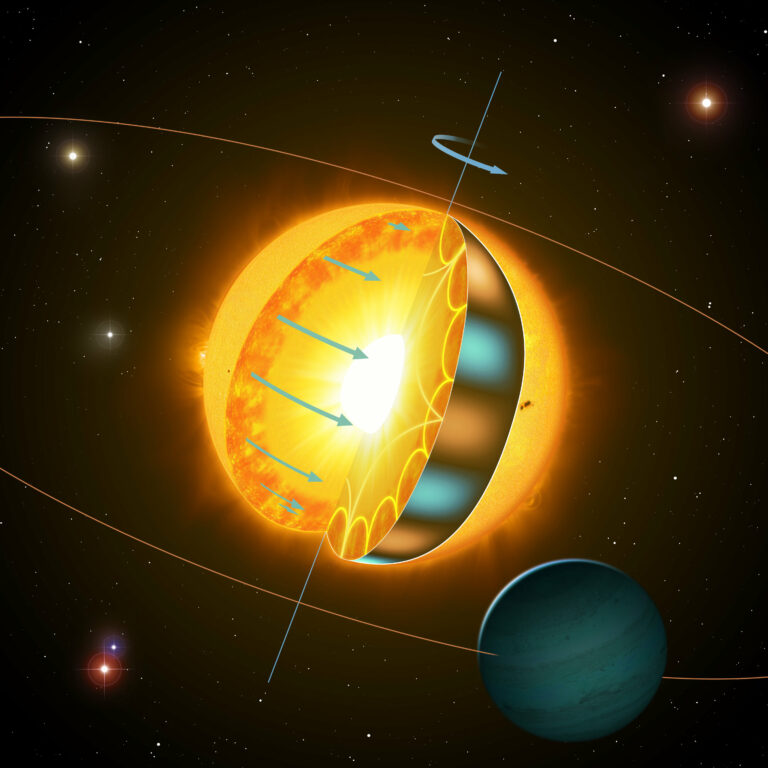Spin Science: Asteroseismologists Validate Faster-than-Expected Rotation in Older Stars
A recent study conducted by scientists at the University of Birmingham has revealed that stars rotate at a faster rate as they grow older, contrary to previous expectations. This groundbreaking research utilizes the field of asteroseismology to provide fresh insights into this evolving theory.
All stars, including the Sun, are initially born with a spinning motion. However, as they age, their rotation gradually slows down due to the influence of magnetic winds, a phenomenon known as ‘magnetic braking’. In 2016, researchers from Carnegie Observatories conducted a study that provided the first indications that stars in a similar life stage as the Sun were rotating faster than what magnetic braking theories had predicted. The study employed a method where scientists identified dark spots on the surface of stars and tracked their movement in relation to the stars’ rotation. While this method has proven effective in measuring the rotation of younger stars, it becomes more challenging to confirm the impact of this weakened magnetic braking on older stars, as they tend to have fewer star spots.

In a recent research published in Nature Astronomy, scientists from the University of Birmingham have employed a novel methodology to validate the notion that older stars exhibit a faster rotation than anticipated. The team utilized asteroseismology to determine the rotational speed of the star. This emerging field of study allows researchers to gauge the oscillations caused by sound waves trapped within the star. By analyzing the distinct characteristics of these waves, scientists can unveil various attributes of stars, including their size and age. During this investigation, the team measured the modes or frequencies of the sound waves generated by the star’s oscillation. As the star rotates, these modes split into different frequencies. To illustrate this phenomenon, the researchers likened it to the sound produced by two stationary ambulances on a roundabout compared to when they are in motion. By quantifying these frequencies, it becomes feasible to calculate the rate of spin for both young and old stars.
Dr. Oliver Hall, the lead author of the study, stated that the latest asteroseismic data provides the most convincing evidence yet for the phenomenon of “weakened magnetic braking,” which suggests that older stars rotate faster than predicted by magnetic braking theories. This finding contradicts the consistent spin change observed in models based on young stars. The researchers believe that changes in the star’s magnetic field could play a crucial role in this momentum loss, and further investigation into the interaction between the magnetic field and rotation is underway. Additionally, the results of this study have implications for our own Sun’s future activity. Dr. Guy Davies, a co-author of the paper, explains that these findings highlight the need to better understand the future of our Sun and other stars. By improving models of solar rotation and gathering more data, we can gain insights into whether reduced solar activity and potentially harmful space weather can be expected in the future. This research represents an important step towards achieving this goal.
This article is republished from PhysORG under a Creative Commons license. Read the original article.
Do not forget to share your opinion with us to provide you with the best posts !




0 Comments